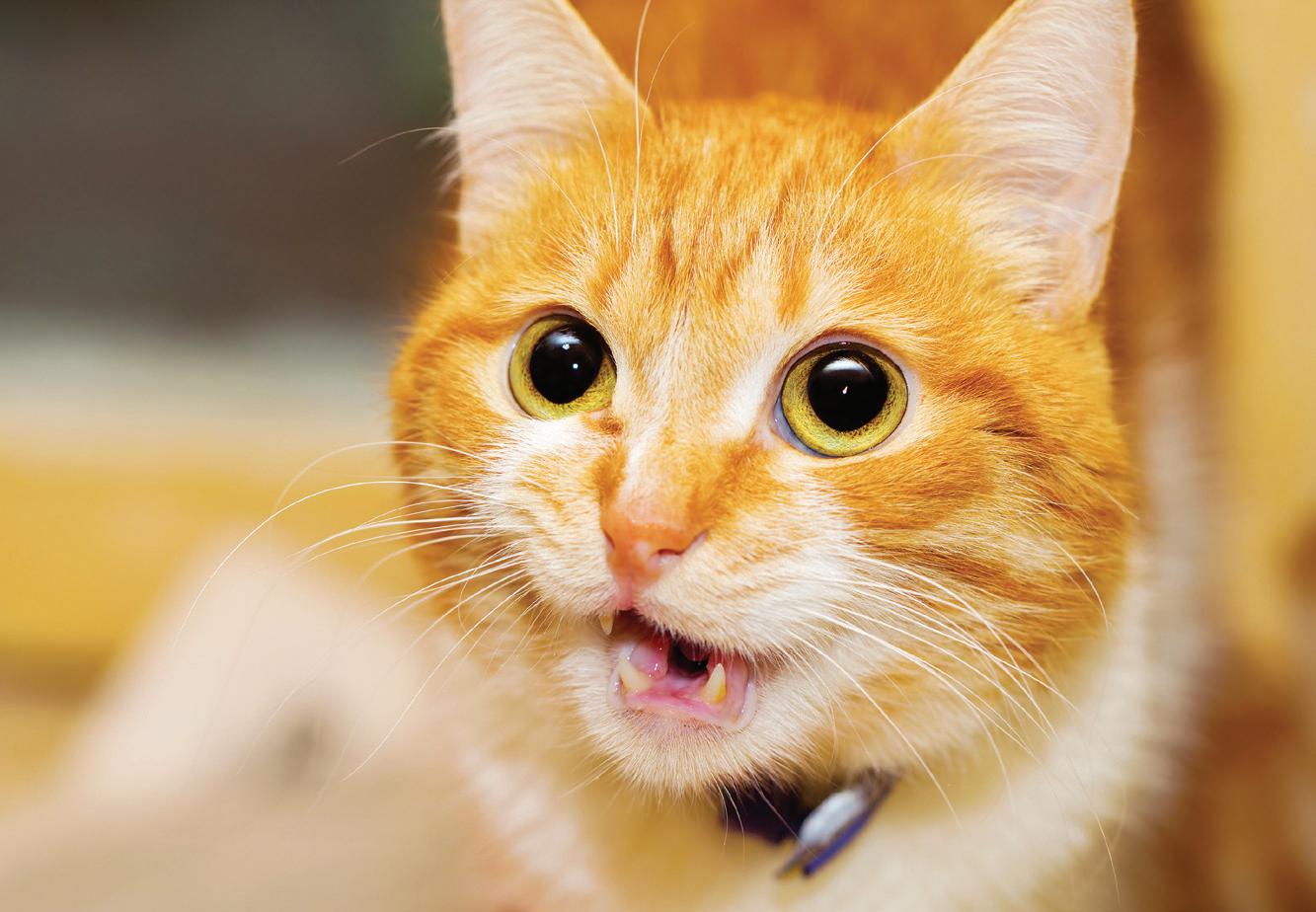
2 minute read
CATS SPEAK
CATS SPEAK… are we listening?
PURR, MEOW, TRILL, CHATTER, HISS, AND HOWL are a few of the sounds cats make! That adorable bundle of fur that seems so content to spend most of its time sleeping, napping and grooming has an amazing vocabulary. Cats can make more sounds than any domestic pet except for birds. By comparison, dogs can make about 10 sounds whereas cats can make more than 100 sounds.
Advertisement
Cats communicate by using a combination of sounds and body postures. They also use scent signals and clues that we humans totally do not understand. Their sounds are subtle and are sometimes difficult to interpret. As cat parents we often don’t pay enough attention to their attempts to chat with us.
The cat sound that probably most of us know and recognize is the irresistible meow. It is very interesting that domestic adult cats only meow to people and not to each other. It is thought that kittens meow when they need mom and, of course, she responds by meeting their needs. The usage slowly fades as wild cats mature possibly because it no longer gets a response. However, human pet moms respond lovingly to the meows of their furbabies. It is a “fits all situations” cry: I’m hungry, I’m lonely, I want to sit on your lap, or we need to have the litter box chat!
Other sounds that we might recognize are the chirp and trill. Chirps and trills are birdlike sounds that mommy cats use to get their kittens to pay attention and to follow her. Our cats use them when they want us to pay attention or perhaps to follow them to an empty food dish. Subtle hint – feed me! They use these sounds to talk with each other. They use them also when they’re excited or annoyed. The sounds mimic birds or the chirp of a rodent. By noticing when they chirp and trill we’ll recognize the subtle changes that indicate they want our attention or perhaps are excited or annoyed.

Some cats are more vocal than others; some cat breeds are known for their vocalizations. It is important to notice any changes in the way your cat normally sends you vocal signals. Cat vocalizations are excellent indicators of a cat’s physical, mental or emotional health. There may be underlying health issues or causes for the changes. As cats age there are conditions that could cause your cat to be more vocal. Also, it could be cognitive dysfunction or a form of dementia which causes confusion, disorientation and stress. A cat’s way of letting us know that all is not okay is by increasingly becoming more vocal. It is important to take your cat to their veterinarian to determine if there are underlying health issues. Meow Cats are not as openly affectionate as dogs; however, they do have strong emotions and feelings. Their style of communication is different; more subtle and complex. Taking the time to learn more about cat communications is an essential step to bridging that communication barrier. Listening to our cats and learning their unique style of communication helps them feel loved and appreciated resulting in deeper emotional bonding and connection.
Excellent Resources:
Meowsic, a study launched in 2016 by Lund and Linköping universities in Sweden. http://meowsic.info Cat Sense – How the New Feline Science Can Make You a Better Friend to Your Pet by John Bradshaw Seven Sounds Cat Make – www.youtube.com/watch?time_continue=154&v=wMTQqQmJkGA&feature=emb_logo






